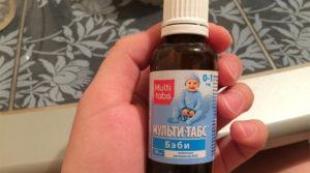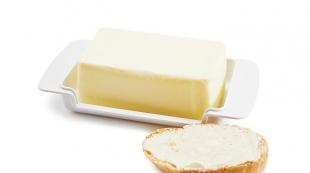What is the dental unit made of? Dental units: classification and recommendations for selection
The most frequent questions of our customers: "How to choose a dental unit?", "Which options settings to pay attention to?”, “Which dental units better?”, “Which dental units more profitable? etc.
Stomatological installation– without a doubt, the most important element of the dental clinic. Therefore, in this article we will try to define clear criteria, according to which you can confidently make right choice. And before looking for an answer to this question, you need to decide which dental unit exactly what you need:
- the doctor of which dental specialty will work on it ( therapist, surgeon, orthodontist, etc.);
- what budget you are ready to allocate for it;
- what color of installation is needed; etc.
So let's start with the price.
On the market for this moment presented models cost from 89,000 rubles to 1,680,000 rubles. Those. the difference is almost 20 times. Naturally, there are serious differences between them in terms of functionality, but whatever they are, NOT everyone is ready to pay for installation. more than one and a half million rubles. Most expensive models , as before, produce world famous brands: KaVo (Germany), Ritter (Germany), Sirona (Germany), A-dec(USA), Antos (Italy), etc.
Stomatological installations of the middle class also known to all: OMS(Italy), Takara Belmont (Japan), range of models A-dec (USA) etc.
Already with confidence here can be attributed to the Korean manufacturer Hallim Dentech, which has been producing products of a good European level for several years. Slightly below middle class you can bring all Slovak manufacturers: Slovadent, Chiromega, Mediprogress. These are well-known and reliable brands that have one more undeniable advantage (we will talk about it below). And the lower price range of dental units - These are Chinese and Brazilian manufacturers. And now, in that order. And some of the Chinese manufacturers even match the level of European brands.
What are the differences besides the price?
To understand what you need, let's take a closer look at how the main elements of the dental unit differ: the patient's chair, the doctor's unit, the assistant's unit ( hydraulic block and suction system) and pedal ( or pedals) doctor. So, patient chair There are two types of chair drives in dental units: hydraulic and electromechanical. By most parameters, an electromechanical chair is more reliable. In addition, it is important to pay attention to such parameters as:
- chair cover ( upholstery material, its mechanical and chemical resistance);
- number and type of armrest mechanism;
- chair movement characteristic ( smooth running, number of programs).

This is how the doctor's block looks like with the bottom feed The doctor's work is also affected by how many instruments are on the doctor's block. This is directly related to the time required to treat one patient. If there are few sleeves, then time is spent on changing the tool. The following instruments can be attached to the dentist element: - air-to-water pistol ( it usually comes as standard) - turbine handpiece - air or electric micromotor - air or electric scaler - second micromotor or turbine - electrocoagulator - photopolymerizer For the usual complex of therapeutic works is enough minimum set of tools (the presence of three sleeves - for the air-water gun, for the micromotor and for the turbine). Further equipment of the block with instruments depends on the type of installation, the desire of the doctor and the range of therapeutic measures carried out by him and financial possibilities. 
The question is not entirely about installations, but it almost always arises when there is a need for a complete set: choose air or electric motor? The criterion is simple electric motor more power, if you need it, then choose it. The same goes for scalers.: air scalers are of course cheaper. And European manufacturers (W&H, KaVo) make them good quality. However, if you opt for Asian manufacturers, then we recommend using piezoelectric ones. Their higher power will greatly save treatment time. assistant block The assistant block consists of two interrelated elements:
- hydroblock (with spittoon and cup filler)
- suction systems.

Assistant unit with instruments and control panel Also, an additional control panel and various auxiliary tools can be located on the assistant's block. Usually the assistant's tools and the control panel are taken out separately on a movable arm. spittoon bowls are stationary and rotary. They are usually made of ceramic or glass. Ceramic with swivel mechanism, although the most expensive, but comfortable and meet high hygiene requirements. Suction systems required for liquid evacuation ( saliva, blood, etc.) and solid particles ( fragments of teeth, filling materials) from the patient's mouth, there are two types: injector and vacuum. injection system suction is based on the principles of hydrodynamics: a specially created air flow captures air from a given volume, thereby a reverse air flow is carried out. When choosing an injector suction system, it must be remembered that when using air suction, additional air consumption occurs, which is reflected in the compressor power ( the compressor must be selected taking into account suction systems). vacuum system suction is based on the creation of vacuum by the compressor in the system. When using a vacuum system, you must use suction separator. In addition to saliva, secretion and blood pumps, additional tools can be installed on the assistant’s block: an air-to-water gun, a light curing lamp, etc.

- Solids collector - separates solids from the water stream and prevents clogging of the sewer.
- Amalgam separator - allows you to retain amalgam and collect it in a separate container.
- Water and air heating system for air-to-water gun
- Hygienic system - monitors the cleaning of suction hoses
- Disinfection system - allows you to disinfect incoming water and systems for supplying saline or autonomous water to instruments, etc.
- patient chair control
- tool management
Universal criteria for choosing a dental unit
That. the required equipment and, accordingly, the price depend on how wide the profile of work you are going to perform on the installation. It is important to understand that good equipment can be hung on all installations, but expensive models differ:
- more electronics (instrument control, pressure measurement, control of the chair and its individual parts, headrest, programming options)
- higher quality materials (upholstery, hoses, plastics, etc.)
- additional convenient features (automatic disinfection of all hoses, water heating, pedal functionality)
- lower the lineup German Ritter installations ( Excellence, Superior New- they really assembled at a factory in Germany, taking into account all the requirements and standards for quality, it is simple to assemble components made in China)
- Fona dental units (the exact opposite situation - at a very good Chinese plant, installations are made from German components, due to which it turns out very quality equipment )
- Premier dental units (also, one of the leaders of the Asian market, initially focused on quality )
- Dental units Azimut (China)
- Dental units Luck (China)
- Chiromega dental units
- Dental units Slovadent
- Dental units Mediprogress
- A-dec Dental Units (USA)
- Dental units Takara Belmont (Japan)
- Upper models of Ritter Dental Units (Germany)
- OMS dental units (Italy)
- Dental units Hallim Dentech (South Korea)
On our website, the site presents dental units and additional equipment for them from manufacturers of the middle price group Takara Belmont (Japan) and OMS (Italy), a wider range of top quality units (Planmeca Finland, KaVo Germany) and equipment kits for them can be seen in our full price list.
To provide qualified assistance, the most important equipment is a dental unit. Dental unit is a hardware complex that allows you to perform basic dental interventions.
Currently, the concept of installation means a complete set, including the installation itself, a chair, a compressor, a doctor's table, a doctor's chair and an assistant's chair.
Dental unit device
The dental unit consists of functional blocks, each of which has its own purpose. Depending on the configuration of the installation, the set of blocks may vary.
The main blocks of the dental unit
- Toolbox the main unit of the dental unit contains instruments for manipulations in the oral cavity. It can be equipped with a lighting unit for tools with fiber optic illuminators.
- low speed motors provide rotation speed of the rotary tool from 10,000 to 30,000 revolutions per minute.
- High speed rotary(turbine) tools provide rotary tool rotation speeds from 300,000 to 500,000 rpm. Usually two tips: therapeutic and orthopedic.
- Other tools scaler (a tool for removing dental deposits), polymerization lamp (for polymerization of photopolymers), etc.
- Control block consists of a pedal and a control panel, it is used to control all systems of the installation (position of the chair, speed of rotation of instruments and other parameters).
- Hydroblock.
- Spittoon designed to dispose of saliva and other liquids in the sewer system, equipped with a flush system.
- glass shell designed to fill a glass with water for rinsing the mouth. Equipped with a filter to clean the incoming water.
- Saliva ejector designed to dispose of saliva and other fluids directly from the patient's mouth into the sewer system.
- A vacuum cleaner is intended for utilization of the aerosol mixture formed in the oral cavity during the operation of high-speed (turbine) handpieces.
- Water-air gun It is intended for drying with a jet of air and irrigation of the oral cavity with water or an air mixture.
- Lighting block consists of a halogen lighting lamp for lighting the working field and a bracket that allows you to raise, lower, turn in a horizontal plane and hold the lamp in a given position.
- Dentist chair designed to accommodate the patient. Moves in a vertical plane (raises and falls) to provide a height convenient for
For the preparation of carious cavities, special equipment and instruments are used. A key element of modern equipment dental office is a dental unit, which is part of the workplace of a dentist.
dental unit is a complex of electrical, mechanical and hydraulic elements that converts external energy into the energy of dental instruments and is designed to provide necessary conditions dental treatment (Shmigirilov V.M., 2002). Currently, in therapeutic dentistry, universal dental units of domestic and foreign production are most often used.
(see Fig. 28) has an electric and air drive for handpiece operation, an oil-free compressor, it is connected to the water supply and sewage system, equipped with an air and driven bur cooling system, an aspiration system (saliva ejector, “vacuum cleaner”), etc. The dental lamp should have sufficient power, at the same time, its light should not cause spontaneous polymerization of light-cured materials. The dental chair should provide comfort for the doctor and the patient during treatment, both in the position of the patient "lying" and in the position of the patient "sitting". In addition, the installations can be equipped with additional devices and equipment: a carious cavity illumination system through the tip, a built-in lamp for the polymerization of light-curing materials, a computer, a radiovisiograph, an endodontic microscope, etc.
The dental unit must meet the following requirements:
- the design of the unit must meet the requirements of ergonomics and maximally correspond to the individual physiological characteristics of the dentist (the doctor should be comfortable working);
- the design of the unit must meet the requirements of a particular treatment process (there are enough “necessary” functions; there are no redundant, “unnecessary” functions);
- the installation should be comfortable and safe for the patient, its appearance and comfort should positively influence the patient's subjective perception of the quality of dental care provided to him;
- the cost and design of the installation must match price category and the general interior of the clinic, as well as the personal taste of the doctor;
- the brand, design and construction of the unit should help to improve the professional image of the doctor both in the eyes of patients and in the eyes of fellow dentists;
- the installation must be reliable, the risk of equipment failure must be minimal;
- the unit should be easy to repair, it should have an affordable service, the delivery time of spare parts should be minimal.
In accordance with this requirement, when purchasing a unit, it is necessary to provide for the possibility and availability of after-sales service, warranty and post-warranty repairs. Dental units currently on the Russian market, depending on their configuration, design, clinical capabilities and price group, can be divided into three classes. Let's take a look at this division using KaVo's dental units as an example.
1. Economy class. In the lot class, you can include installations of relatively low cost, of sufficiently high quality, but limited by the minimum number of functions required by the doctor. In addition, they are convenient for the doctor and the patient, functional, but not distinguished by an exclusive or "advanced" design. An example is the "Unik T Standard" (KaVo) installation (see Fig. 29).

Rice. 29. Universal dental unit "Unik T Standart" (KaVo)
2. Business Class. The lot class should include installations of an average price category, improved quality, allowing you to use any tool and achieve the required adjustments. Such devices have additional functions and are equipped with additional tools (photopolymerization device, ultrasonic piezoelectric scaler, tip illumination, etc.). In addition, such units are equipped with a more convenient and ergonomic control system with programming functions. An example is the "KaVo PRIMUS 1058 S" (KaVo) installation (see Fig. 30).

Rice. thirty. Universal business-class dental unit "KaVo PRIMUS 1058 S" (KaVo).
3. Elite class. This class includes installations of a high price category, created on the basis of the latest technologies and original design and design solutions. Such installations have a number of additional functions, are equipped with additional tools, a computer and a control system with programming functions. The comfort of such devices for the doctor and the patient is increased, they are highly functional, they are distinguished by an exclusive, "advanced" design. An example is the installation "KaVo ESTETICA E80 T" (KaVo) (see Fig. 31)

Rice. 31. Universal dental unit "KaVo ESTETICA E80 T" (KaVo).
The workplace of a dentist (see Fig. 32), in addition to the installation, is equipped with a dental chair to accommodate the patient; chairs for the doctor and assistant; furniture to accommodate tools, instruments, materials and medicines; other equipment depending on the specialization, qualifications, individual preferences of the doctor and the possibilities medical institution. The workplace of a dentist is equipped in accordance with the principles of ergonomics.

Rice. 32. The workplace of a dentist based on a modern universal dental unit.
Modern dental units have various drive types(see Table 7). From the drive, rotation is transmitted to the cutting tool with the help of a tip.

Dental handpiece is a tool that directly converts the energy of a compressed air flow, the rotation of a micromotor or electricity in the corresponding movements of the working tool (boron, endodontic file, scaler, etc.). The first dental handpiece was created in 1919, the first electric drill appeared in 1926, and the air turbine appeared in 1959.

Rice. 33. Turbine tip
In therapeutic dentistry, turbine, contra-angle and straight handpieces are used to prepare hard tissues of teeth and process fillings. In the turbine handpiece (Fig. 33), the bur is driven by compressed air, which is fed to the turbine rotor located inside the handpiece head (Fig. 34).

Turbine handpieces are currently the most commonly used in restorative dentistry. Their main advantage is the high speed of rotation of the bur, reaching 160-400 thousand rpm. These tips provide fast and efficient preparation of hard tissues, primarily tooth enamel. However, the low mechanical power of the turbine handpiece leads to the fact that an increase in bur pressure on the treated tissue causes its rotation to slow down or even stop (“jamming”). In addition, it should be remembered that increased lateral loads that occur with excessive pressure on the drill during the preparation process lead to accelerated wear of the turbine handpiece rotor group. Reducing the force of pressure on the bur reduces the efficiency of cutting hard tissues. Therefore, when working with a turbine handpiece, you should constantly control the pressing force on the bur. The pressure force on the drill should be minimal, similar to stroking. When using a sharp bur and the tip is in good condition, this force is quite sufficient for effective preparation of hard tissues of the tooth. The air pressure supplied to the turbine should also not be exceeded. This, although it increases the speed of preparation, leads to rapid wear of the handpiece. Another one possible problem in the process of preparation with a turbine tip - a violation of the mode of cooling of the tooth tissues. This can lead to damage to parietal enamel and dentin (thermal necrosis), pulp burns, as well as soft tissues surrounding the tooth. It is our deep conviction that the preparation of hard tooth tissues without sufficient air-water cooling is unacceptable. The turbine handpiece is connected to the drill by means of a rubber hose having a mouthpiece with holes (connector) at the end. The types of connectors most common in our country are shown in Table 8. In addition, there are special adapters that allow you to connect, for example, a Midwest tip to a Borden connector, etc. Turbine handpiece burs have a shank diameter of 1.60 mm (Fig. 35). In the tip, the burs are fixed with a collet device or a special key.

contra-angles(Fig. 36) are low speed. Their main feature is the variety of working tools used and types of movements during preparation. A conventional micromotor handpiece with 1:1 gearing provides bur rotation speeds from 1,000 to 40,000 rpm. Increasing tips are also produced with a gear ratio of 1:2-1:10, the speed of rotation of the bur in them is 5,000-230,000 rpm. Reducing handpieces usually have a ratio of 4:1 and are used primarily in endodontic procedures. The speed of rotation of the drill in the lowering tip is 10-10,000 rpm.

Rice. 36. contra-angle
Straight handpieces(Fig. 37) have approximately the same speed characteristics as the angular ones, however, due to design features they allow more pressure to be applied to the bur without vibrating the tool. They are used mainly by dental surgeons, dentists and orthopedists and dental technicians. The straight handpiece burs have a shaft diameter of 2.35 mm (Fig. 35) and are fixed in the handpiece with a collet. The rotating parts of the tips wear out over time. Signs of wear are: the appearance of vibration and beating of the bur during rotation, deterioration of the fixation of the bur in the tip, heating of the tip, the appearance of unusual sounds during operation. In this case, repair or replacement of the tip is required.

Rice. 37. Straight handpiece
Need to constantly monitor technical condition tips. Great importance in ensuring their long-term work has proper care behind them. Handpieces should be cleaned and disinfected after each patient intake. It is recommended to lubricate the handpieces at least twice per shift, on average - after receiving 4-5 patients of a therapeutic profile and always before sterilization. Lubrication is carried out either with liquid oil using a grease can, or with a special pressurized aerosol lubricant (spray). The use of a spray is considered more effective, as it allows not only to lubricate the tip more effectively, but also to remove contaminants from its internal channels. After lubrication, the tips should be stored head down in a special container. Do not leave a lubricated handpiece on the unit, as this can lead to oil leakage into the micromotor and failure of the latter. Before starting work, excess oil is removed from the handpiece surface, and the handpiece is “blown through”: it is turned on outside the patient's mouth for 15-20 seconds. It should be remembered that some turbine handpieces, in order to extend the life of the rotor group, require the supply of oil along with the drive air. When working with such a tip, it is necessary to constantly monitor the presence of oil in a special reservoir inside the unit and one hundred flow to the compressor. Most modern turbine handpieces, on the other hand, require the absence of oil in the drive air and the use of oil-free compressors. The speed handpiece should be stored with the bur clamped into it. This lengthens the life of the collet. When working with a contra-angle handpiece, care must be taken when inserting the bur into it, since the introduction of the bur to a shallower depth leads to damage to the locking latch and the need to repair the tip. The above recommendations are of a general nature. In cases where the manufacturer gives other instructions, it is necessary to follow the instructions attached to the tip.
Dentistry as a separate branch of medicine was formed in the 20s of the last century. At the same time, the first drills were produced, comparable in size to a perforator, and their sound resembled the roar of a bomber.
In the 21st century, medicine can afford not only compact drills, but also portable dental units that fit in a suitcase.
A dental unit is a complex of all the tools that are necessary for most dental procedures. The device of the dental unit includes:
- patient chair;
- tool table;
- instrument block;
- illuminator;
- for air supply;
- water and air heating unit;
- spittoon bowl.
Types of dental units
There are two types of such equipment:
- Stationary. All equipment is located on an area of 3-4 square meters. m and has a rigid attachment to the floor. These designs are distinguished by a large set of tools and instruments, but low mobility and bulkiness.
- Portable. The doctor's module does not have rigid connections with the patient's chair. Such equipment is compact and highly mobile.
Smart installation choice
When choosing any dental equipment, you should pay attention to the reliability and power of the tools that it comes with.
For example, the patient chair can be equipped with hydraulic or electric lifting mechanism. The first option has a low price, but is more prone to wear and, as a result, breakdowns.
Attention! Because of the high cost, clinics often prefer used equipment. But the fact is that it is sold without any warranty and service. It is better to purchase new equipment from an official supplier, who will provide not only its configuration, but also technical support as well as repairs.
When buying such equipment, it is important to give preference to proven manufacturers: KaVo (Germany), Diplomat (Slovakia), Sirona (Germany), Darta (Russia), FONA (China, Slovakia), Azimut (China).
Installation, repair and maintenance
Installation of a dental unit will not bring many problems if you strictly follow the instructions that are always included in the kit. The whole difficulty lies only in moving this structure, and it is caused by its mass - 200-250 kg. 
Maintenance of equipment is carried out once a month and consists of computer diagnostics and technical inspection. This is done by professionals, because the wrong setting causes problems that can lead to a complete failure of the dental unit.
The cost of repairs depends on the nature of the damage. For the most minimal repair, the owner of the equipment will be forced to pay the master about 2,000 rubles (and this is only for the work itself). Therefore, the purchase of new equipment, which will be under warranty, is more beneficial for the clinic.
Overview of the most popular models
Dental units "Darta" (Darta) are widely known in Russia, as they are produced in our country.
Darta 1600 M is one of the most popular models on the dental equipment market. Manufacturers have tried on the design and ensured ease of operation. Also, the developers themselves noted that when designing the unit, all the preferences of doctors and their assistants were taken into account. However, the Darta 1600 M is a bottom-feed device, and according to experts, this leads to the fact that the doctor has to make sure that the tip does not fall out of the socket. Also, this part is subject to imperceptible contamination.
Sirona Intego is the brainchild of a German company that was part of Siemens until 1997. The manufacturer himself calls this equipment the best in its class. And doctors note the convenience of working chairs and increased freedom of action. However, it is worth noting that Sirona is also more expensive than the products of its competitors.
Dental unit "Diplomat" (Diplomat Adept DA110A)- This is another popular model that has managed to establish itself in the market. Country of origin - Slovakia. Adept DA110A is stationary device with bottom feed. The equipment is compact and lightweight - depending on the variant - 50-70 kg. Experts speak positively about this model and the manufacturer as a whole due to the good balance between price and quality of the products offered.
Conclusion
The dental unit, along with the competent work of the doctor, makes up a large part of the successful operation of the clinic. Therefore, the selection of equipment must be approached thoroughly.
It is worth giving preference to manufacturers who have proven themselves in the market. It will be beneficial to purchase new equipment from an official representative of the company, which will provide warranty repairs and maintenance of the dental unit.
Today we will describe the main components of the dental unit, their types and tell you what they are used for.
Instrument unit (UNIT) or dentist element- the basis of the dental apparatus. It includes manipulation tools: low-speed electric motors, electric and pneumatic micromotors, and turbine units. It is often completed with a lighting block for tools. The following instruments are installed on the doctor's block:
water-air gun, used for drying/wetting the mouth
turbine handpiece, used for therapeutic and orthopedic work
scaler, used to remove tartar
micromotor, used for processing crowns, prostheses and for distant teeth
Units are divided according to the type of tool supply:
- with top feed. The advantage of this type is the convenient return of the instruments to their place, the disadvantage is the small length of the sleeve, which is not always convenient for the doctor.
- with bottom feed. Unlike the previous type, there is a convenient sleeve length, which is comfortable for the dentist, but there is an inconvenient return of the instruments, the doctor needs to make sure that the instrument does not fall out.

Control block- an important part of the dental unit. It consists of pedals and a control panel that controls all systems of the unit.
The control pedals have the ability to control:
patient chair control
tool management
Modern installations use multi-key pedals. If the installation is used for a large number of manipulations, then this is extremely convenient.


assistant block, which includes:
Hydroblock, used to store and supply distilled water
Spit shell and glass shell, used to expel saliva and fluids into sewer pipe equipped with a flush system. The spittoon bowls are made of glass or ceramic. They are divided into 2 types: stationary and rotary.


Saliva ejector- used to remove saliva and fluids from oral cavity patient into the sewer
A vacuum cleaner- used to clean the aerosol mixture that is formed in the oral cavity when working with turbine handpieces
Lighting block- includes a lighting unit made of a halogen lamp and a bracket.
Dentist chair- an important block for the placement and comfort of the patient. There are hydraulic and electromechanical. Hydraulics are less reliable, but also have a lower cost.
Compressor- used to supply compressed air to tools.
Doctor's table- used for the convenience of the dentist, for placing instruments.
Dentist's chair- used for the convenience of placing a doctor. Differs from regular chair the presence of a latch that does not allow the chair to rotate after the doctor has taken a working position.
Assessing the complete set of the dental complex, three classes are distinguished: economic, medium and high. Economy class installations are equipped with the most necessary, while premium class installations include the maximum number of blocks and tools. Each clinic selects the unit according to the level of knowledge of doctors and their status.
But remember, every installation needs scheduled maintenance. The specialists of our company will be happy to help you with this issue.










